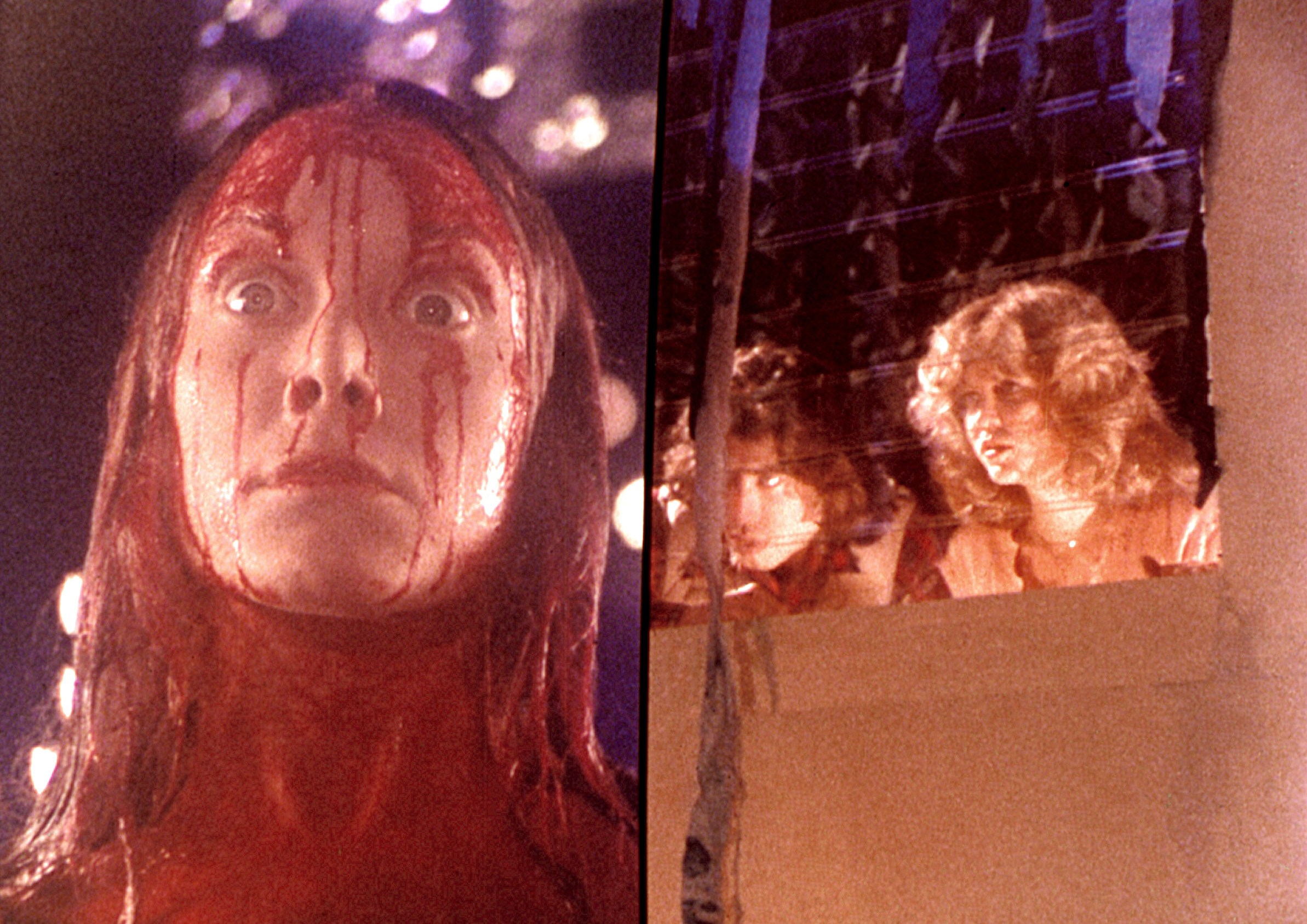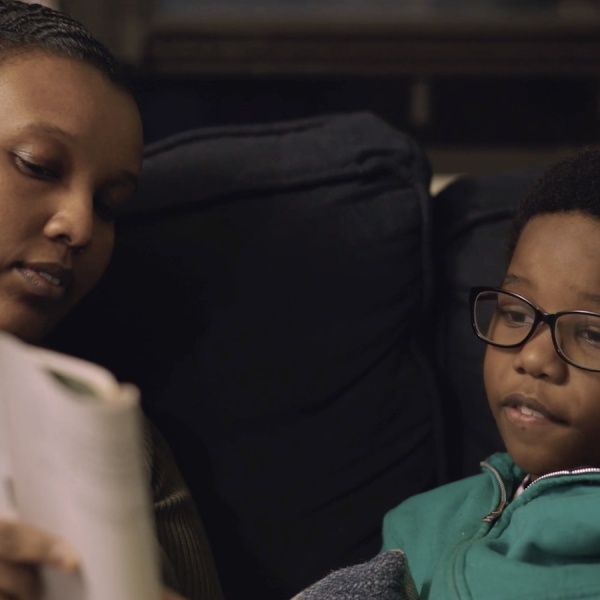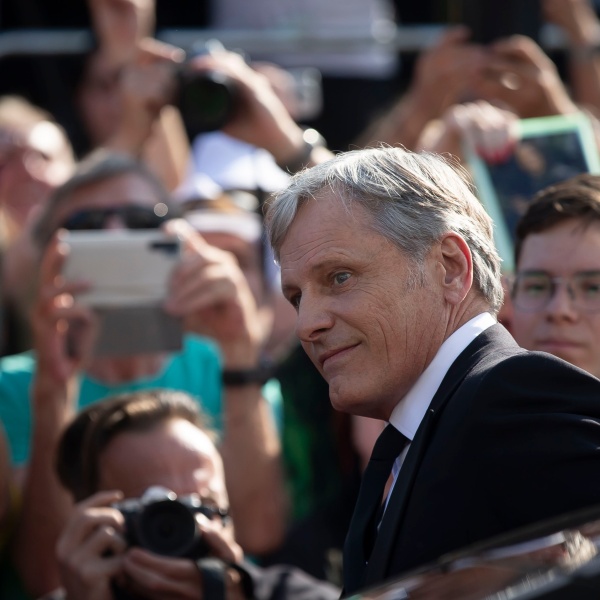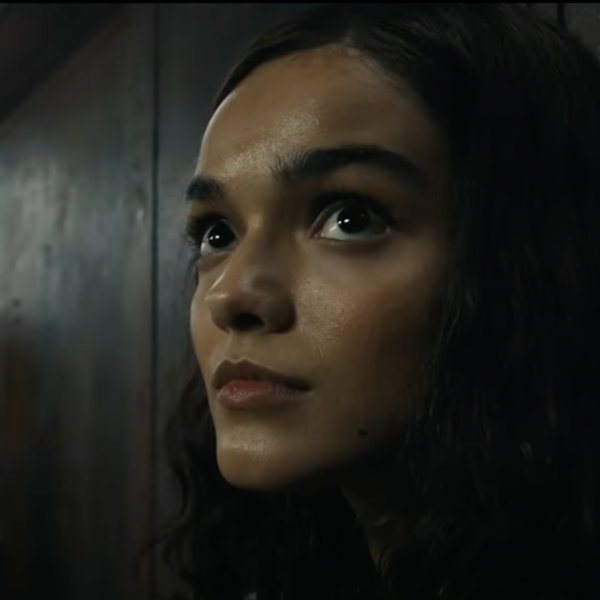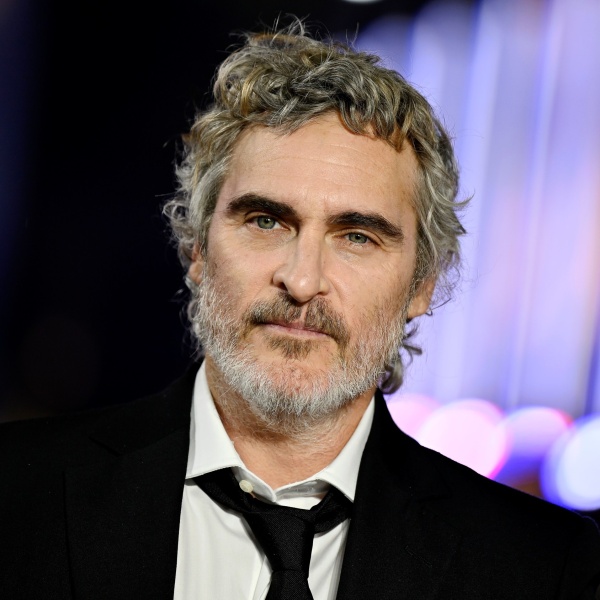Filmmaker and historian Laurent Bouzereau has been thinking and writing about Brian De Palma for most of his life, ever since he wandered into a movie theater to see “Obsession” and acquired an obsession of his own.
Since then, Bouzereau has probably devoted more hours to exploring and explaining De Palma’s oeuvre than any other critic; he was the author of the first English language book-length critical study on the director, “The De Palma Cut,” and has produced endless hours of supplementary features for Laserdisc, DVD, and Blu-ray releases of De Palma classics like “Carrie,” “Dressed to Kill,” and “Body Double.”
Now, Bouzereau has synthesized all he’s learned about his master’s origins in “The De Palma Decade: Redefining Cinema with Doubles, Voyeurs, and Psychic Teens.” It’s a book devoted to the period in which De Palma created and perfected the visual language for which he would become famous in movies including “Sisters,” “The Fury,” and his masterpiece, “Blow Out.” Bouzereau moves not in chronological but thematic order through De Palma’s 1970s and early 1980s output, grouping films together according to their visual and philosophical preoccupations and looking under the hood to see how and why De Palma achieved his effects.
Bouzereau does so via a combination of interviews and his own observations after over 40 years of study; as a result, “The De Palma Decade” becomes not only a critical biography of De Palma but a sort of autobiography for Bouzereau himself as he traces his own evolution as a moviegoer (and a gay man responding to De Palma’s complicated treatment of sexual orientation) via his responses to De Palma’s work. Below is an exclusive excerpt from the book’s section on “Carrie,” in which De Palma and members of his cast and crew recall the casting of one of his most iconic films.
The below is excerpted from “The De Palma Decade: Redefining Cinema with Doubles, Voyeurs, and Psychic Teens” by Laurent Bouzereau. Copyright © 2024. Available from Running Press, an imprint of Hachette Book Group, Inc.
By the time Brian De Palma got to “Carrie,” he had already proven his incredible eye for casting. He is almost unrivaled in his discovery of many interesting actors as well as directing powerful performances from previous generations of talent. Most people forget that “Carrie” received Oscar nominations for Sissy Spacek and Piper Laurie — a rare and remarkable achievement for a film originally positioned as a Halloween B-horror movie. Through “Carrie,” De Palma would introduce (or re-introduce, in the case of Piper Laurie) a stunning assortment of actors.
BRIAN DE PALMA: George Lucas and I were both looking for unknowns, and because we were looking at everybody, we opened up the casting to any kid that wanted to come and try out for the parts in “Carrie” and “Star Wars” [1977]. It took weeks and weeks; we sat together and, basically, went through hundreds of boys and girls.
I knew Sissy because she was [production designer] Jack Fisk’s girlfriend, and, ultimately, his wife. She had helped paint sets on “Phantom of the Paradise.” She had done a couple of films, but I had my eye set for another young actress I had seen in a movie where she gets an abortion [Betsy Slade in “Our Time,” 1974]; she was very touching and moving, and I thought this girl was perfect for the part.
SISSY SPACEK (“CARRIE WHITE”): All of the young actors in LA wanted to be in this film. And I was feeling a little weird because I was only testing for one role. So, I didn’t have as big a shot as everybody else did of getting in the film. I got this commercial and it just happened to be on the same day as the test. I called Brian, told him about the commercial, and there was a long silence on the telephone, and he said, “Do the commercial.” I hung up and it just made me so mad.
BRIAN DE PALMA: But Sissy thought about it, came in, and did the test.
SISSY SPACEK: I had re-read the book the day before the screen test and I think I rubbed Vaseline in my hair. I found some old sailor suit that my mother had made for me in seventh grade, I took the hem out of it, and I was really into it. I was feeling very sorry for myself, which was perfect for the character. So, when I went into the test the next morning, I don’t think I even washed my face. [The hair and make-up team] saw me come in, they just ran for me because I just looked so awful and, of course, I told them no. I went into a corner and felt so bad at that point because I knew I was not Brian’s favorite. And that worked for me, I just decided I was going to get it.
JACK FISK (PRODUCTION DESIGNER): Because I was working on the film, the next day I went to see the results of all the tests. And Sissy came on and just knocked people’s socks off. She was waiting for me out in the parking lot in the car, because she was anxious to see how it went.
SISSY SPACEK: And he came running out and said, “You got the part. Ask for whatever you want,” which was very little!
BRIAN DE PALMA: Casting a movie like “Carrie” has a lot to do with just your ability to spot young talent, and then give them a good part, like I did with Bob De Niro in “The Wedding Party” [1969], “Greetings,” and “Hi, Mom!” We spent a long time casting these roles, and I think we got the best group of young actors around at the time. They connected with the audience, and many of them went on to have long careers. I remember pairing them up, switching them around, trying improvisations, and, of course, they were very eager to try anything I could dream up, basically.
They were playing stereotypes of your high school, mythological figures. Amy Irving’s character, Sue, has everything: She’s the smart and good-looking girl. She’s got the good-looking guy, the athlete with the golden curls, played by William Katt. And then we have the dark side. We have Nancy Allen as Chris, playing the manipulative, sexy villain, basically, and John Travolta playing the numbskull who gets manipulated by Chris. And the actors made such interesting creations off these stereotypes and gave them warmth, heart, and emotions.
AMY IRVING (“SUE SNELL”): I had never made a film before. I had grown up in the theater and geared my whole life toward being a stage actress. When I finished drama school in London, I came back to Los Angeles, where my parents were, and I immediately got an agent and started making the rounds while doing a production of “Romeo and Juliet.”
The screen test for “Carrie” was first, and Brian offered me the role, but then I had my screen test for “Star Wars.” It was a very difficult script — we’re talking about R2-D2 and C-3PO. Brian sat me down and worked on the audition [for “Star Wars”] with me. And I said, “Why are you doing this? If I do ‘Star Wars,’ I won’t be able to do ‘Carrie.’” And he said, “Amy, ‘Star Wars’ is going to be a huge film. I think if you get it, you should do it.” And I said, “You don’t want me?” He goes, “No, I do. I want you. But I just think this would be amazing for you, and you’d be great as Princess Leia.” I did not get the role but what a wonderful consolation prize to be in Brian De Palma’s “Carrie.”
NANCY ALLEN (“CHRIS HARGENSEN”): Chris is the only role that I read for “Carrie.” The day before the audition, I stayed up all night to read both the script and the novel. For some reason, I understood Chris. I sympathized with her and could see that she was feeling like Carrie, but she was the type that would lash out. And it’s just so much fun to get to play mean, and hateful, something you don’t get to do in real life.
When I first met Brian De Palma that day at the casting session, I just immediately felt at ease. He was part of what we were doing. He’d say, try this, try that. I felt comfortable exploring and taking risks with the character. I didn’t really know who he was. I knew the name sounded familiar and I had seen “Phantom of the Paradise.” I was just very excited to be there.

WILLIAM KATT (“TOMMY ROSS”): In the early seventies, I was playing all kinds of entertainment fields. I was in a band; I was working in the theater largely. I had been doing a few seasons at South Coast Repertory. I had worked down at the Mark Taper Forum, and I was bouncing all over the place, getting periodic day gigs, doing some voice-over work or being a day player on episodic shows. I first met Brian De Palma and George Lucas during their shared casting session. I read for Luke Skywalker, which I didn’t get. I came back specifically for the role of Tommy, and I had a third audition where they paired us up. I remember doing a scene with Amy and another with Sissy. Amy and I had been dating so that didn’t hurt that we were going to play boyfriend and girlfriend in the film.
P.J. SOLES (“NORMA”): I came out to LA, and it was just a magical thing that one of the first auditions I went on was this dual audition. I went in and I just remember, right away, Brian looking at me. I could just sort of tell that he liked me. And then George Lucas was just kind of stern-faced. Brian turned to him and said, “I’ll put this one on my list.”
BETTY BUCKLEY (“MISS COLLINS”): I had met De Palma when I went on an audition for “Phantom of the Paradise.” I was in my mid-twenties [and] a very serious young actress in town. I had only ever really wanted to be a theater actress. I never thought much about Hollywood. But I had some wonderful agents, and they sent me on this audition. By then, I thought Hollywood people were arrogant and pompous. So, I walked in with an attitude. And De Palma was intrigued by that, which I thought was amusing. He didn’t cast me in “Phantom,” but he came to see me in “Pippin” on Broadway, and then he came to the acting class I taught. Eventually, he called me in to loop minor characters in “Phantom” and his next film, “Obsession.” I had this ability to do voices. I realized that Brian was getting into this pattern of casting somebody who looked right for the part but didn’t have any real acting skills. And I told him, “No more looping.” Months later, he called me for dinner; he gave me [the novel] “Carrie,” and said he wanted me for the gym teacher. It seemed like a small part, but I said yes. Later, I got the script, and the part was much bigger; it was a fabulous role. I was so touched by it. I just sat in my living room and cried. He had made this gift to me; there had been such a progression to our understanding of one another, at a time when nobody in Hollywood would have ever thought of me for anything. If it hadn’t been for De Palma, I would have never done a movie.
BRIAN DE PALMA: The idea of Piper Laurie came from Marcia Nasatir. I had always been an admirer of Laurie, and I thought this was an interesting idea. I met her and told her how I thought the part should be played, and she amazed everybody.

PIPER LAURIE (“MARGARET WHITE”): I’d done “The Hustler” [1961] and I retired for fifteen years until I was asked to do “Carrie.” Fifteen years. To say I was bored with acting isn’t quite accurate, but I was kind of fed up. It didn’t seem very important. The Vietnam War had started and civil rights movement, and I was getting offers of the same part I did in “The Hustler.” It just seemed much more interesting to retire and live in upstate New York in Woodstock . . . When “Carrie” came my way, truthfully, I wasn’t that enthusiastic about it. I no longer had an agent, but a wonderful woman who had been my agent years before called and said, “I have a script here, I’m going to send it up.” So, I read it, and I just didn’t get it. I was talking to my husband [critic Joe Morgenstern] that evening and he said, “You know, Brian De Palma has a comedic approach to just about everything he does,” and I thought oh, that’s the secret. I re-read it and I saw it was a satire, so I took the train into New York City to meet Brian De Palma.
BETTY BUCKLEY: I loved the role of Margaret White, and I am a great admirer of Piper Laurie. But I wanted to play that part so badly! I wasn’t quite old enough for it yet but that was the kind of acting that I had aspired to be able to do, to play crazy people. Her performance was wonderful. So, I was really excited to get the opportunity to grow from playing Miss Collins to play Margaret White in the musical stage version (1988) of “Carrie” a few years later.
BRIAN DE PALMA: The cast was just a dream. They were committed and devoted to trying everything. They were afraid of nothing; they would do anything. It was one of those great cast experiences.
